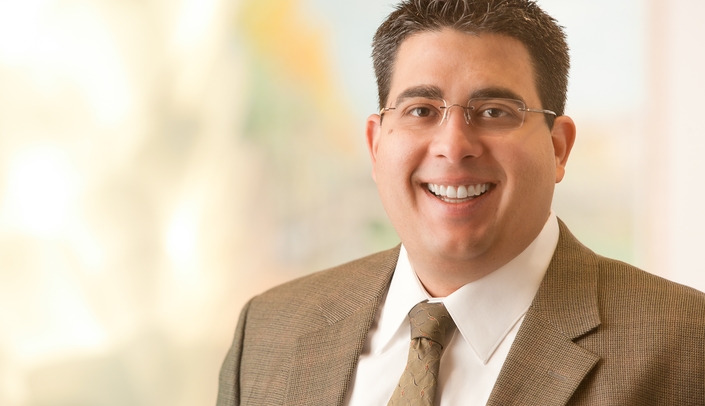It’s a debilitating disorder that causes people to feel like they are going to fall down when they are standing.
It’s called primary orthostatic tremor (OT), and this week the University of Nebraska Medical Center is hosting more than 50 OT patients from around the world in what is the largest study ever done with OT patients.
“It’s a very rare condition, so it’s quite an achievement to get so many patients to congregate in Omaha,” said Diego Torres-Russotto, M.D., a movement disorders specialist at UNMC. “OT is a miserable disease. Hopefully, this study will help us come up with some answers for these people.”
Dr. Torres-Russotto, who is an associate professor in neurological sciences, said patients will be coming from Spain, England, Canada, Australia and the United States.
The International Orthostatic Tremor Meeting started Monday evening and will run through Friday. This marks the second time Omaha has hosted the event, with the previous Omaha meeting held in 2012. Last year, the meeting was held in Australia.
The patients will each undergo a two-hour physical examination by a movement disorder specialist and a physical therapist, as well as electrophysiological studies. The goal of the study will be to determine if the patients really do have postural instability and to assess the presence of ataxia, a neurological sign consisting of lack of voluntary coordination of muscle movements.
In addition to Dr. Torres-Russotto, the research team in neurological sciences includes: John Bertoni, M.D., Ph.D., professor, and Amy Hellman, M.D. and Danish Bhatti, M.D., both assistant professors.
Collaborators from UNMC’s hospital partner, The Nebraska Medical Center, include: Jen McKune, Lori Schmaderer and Katie Blacketer — Physical Therapy Department; and Cindy Penke, Regan Iske and Bobbi Roeder – case managers in the Movement Disorders Department.
Dr. Torres-Russotto said participants in this year’s study will go through four new features:
- They will undergo an electroencephalogram (EEG) test, which records brain waves in an effort to determine the place in the brain that is causing the problems. Najib Murr, M.D., assistant professor, neurological sciences, will be performing and analyzing the EEG arm of the study.
- They will test a smart phone app that can be used to diagnose the disease by measuring tremors in the legs.
- They will receive specialized video analysis developed at Massachusetts Institute of Technology.
- They will receive psychiatric assessment by a UNMC psychiatrist, Mark Fleisher, M.D., that will attempt to measure their level of suffering.
OT is characterized by high frequency tremors of the legs when in a standing position and an immediate sense of instability. Because of the speed of the contractions, OT is often not recognized as a tremor when compared to essential tremor or Parkinson’s disease.
Dr. Torres-Russotto said OT is greatly underdiagnosed and often misdiagnosed as other neurological problems such as Parkinson’s, essential tremor or psychogenic problems.
“People with OT do not typically complain of tremors,” he said. “Their biggest problem is the sudden disabling event that occurs when they stand. They feel unsteadiness and imbalance while standing. They can only stand for a short period of time, in some cases only seconds. There might be a feeling of panic. They need to sit down or start walking to relieve their symptoms.”
OT is a repeating cycle that happens all through the day, he said. It is life-changing and unrelenting.
“It is an incapacitating disorder,” Dr. Torres-Russotto said. “It impacts your life in just about every way imaginable and makes routine tasks such as going to church, standing in line at the grocery checkout, even going to the bathroom a major challenge.”
Some other facts about OT include:
· It is more common in females.
· There’s usually a 10-15 year lag between onset of symptoms and diagnosis.
· Onset typically occurs around age 40.
· It won’t kill you, but it typically gets worse over time.
· Diagnosis is confirmed through electromyography, or EMG, a test that measures the electrical activity of muscles.
· By touching something, the feeling of falling improves.
The UNMC study will be blinded, Dr. Torres-Russotto said, as half the participants will have OT and the other half will have no balance issues.
He hopes the study will lead to further research and treatment options.
For more information on OT, go to http://www.orthostatictremor.org/.
Through world-class research and patient care, UNMC generates breakthroughs that make life better for people throughout Nebraska and beyond. Its education programs train more health professionals than any other institution in the state. Learn more at unmc.edu and follow us on social media.
Twitter | Facebook | Pinterest | YouTube
